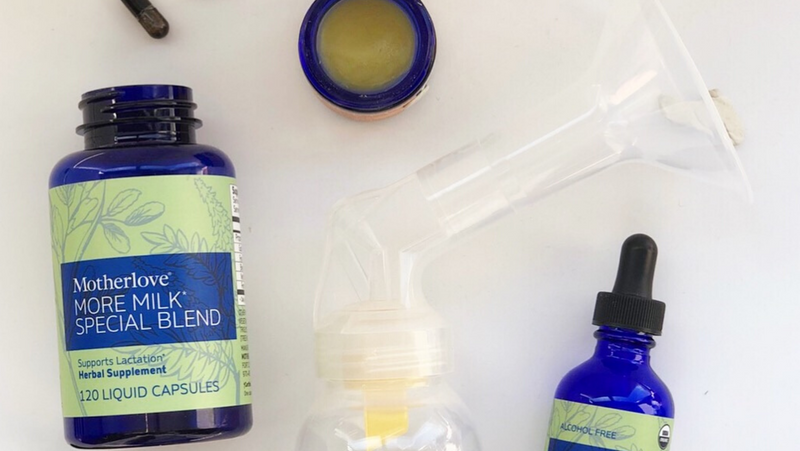
If you're struggling with a milk supply problem,* you may be also be struggling to figure out why. And answering that question is important, since knowing the source of the problem allows you to target your treatment to the cause. But figuring out the “why” isn't always that easy.
That's why we love the milk supply equation.
In The Breastfeeding Mother's Guide to Making More Milk, Diana West and Lisa Marasco introduce the milk supply equation to explain the key factors which allow us to make enough milk.
Milk Supply Equation - Copyright © Lisa Marasco
Sufficient lactation tissue
+ Intact nerve pathways and ducts
+ Adequate hormones and hormone receptors
+ Adequately frequent, effective milk removal and stimulation
= Good milk production
We thought we'd explain what each piece of the equation means, so that you can use it to solve your milk supply mystery.
Sufficient lactation tissue: Some women have less glandular tissue than others, and as a result produce less milk. This isn't a question of breast size, but of the amount of milk making structures inside the breast. Some characteristics of breasts with insufficient glandular tissue (sometimes referred to as breast hypoplasia) are listed in this excerpt from the book Finding Sufficiency and in our podcast on the same topic.
Intact nerve pathways and ducts: If you've had a breast surgery or even a breast injury, you may have sustained damage to your milk ducts and/or nerves. Both are key to milk production. For more on the effect of surgeries on breastfeeding, see our podcast interview with Diana West on breast surgeries.
Adequate hormones and hormone receptors: An often overlooked source of milk supply problems, adequate hormones are another part of the milk supply equation. Conditions such as PCOS, anemia, thyroid problems, and postpartum hemorrhage can affect your hormone levels and may cause problems with milk supply. For more information on this important and complex subject, see our podcast interview on hormonal causes of low milk supply.
Adequately frequent, effective milk removal and stimulation: This part of the equation is at the heart of many breastfeeding problems, so let's look at each part.
Adequately frequent: Frequently emptying of your breasts signals your body to maintain a good level of milk production. What does adequately frequent mean? Generally it means 8-12 feedings in 24 hours, but some babies who don't remove much milk at feedings - especially babies born early and those who are sleepy - require even more feedings. Pacifiers can mask feeding cues, so consistent use of them can reduce feeding frequency and lower milk supply. For mothers who depend on a pump to replace feedings at the breast, infrequent pumping can also lower supply.
Effective milk removal: Removing a significant amount of milk at each (frequent) feeding also signals your body to maintain good milk production. But a baby who has a poor latch, is sleepy, is refusing the breast, has an anatomical barrier to effective milk removal (tongue tie, cleft palate, low tone, etc.), or is otherwise unable to remove enough milk, will make it difficult to establish and maintain an adequate milk supply. Milk removal also occurs with a breast pump, so pumping problems can also result in lower supply.
Fortunately, there are steps you can take to remedy many of the causes of low milk supply. For more information on the milk supply equation and measures you can take to increase your milk supply, we highly recommend The Breastfeeding Mother's Guide to Making More Milk. And it bears repeating that a lactation consultant can be an invaluable resource for resolving milk supply problems.
*There are many things that can make your supply seem low when it isn't, so it's important to first figure out if supply is really the problem.



